Introduction
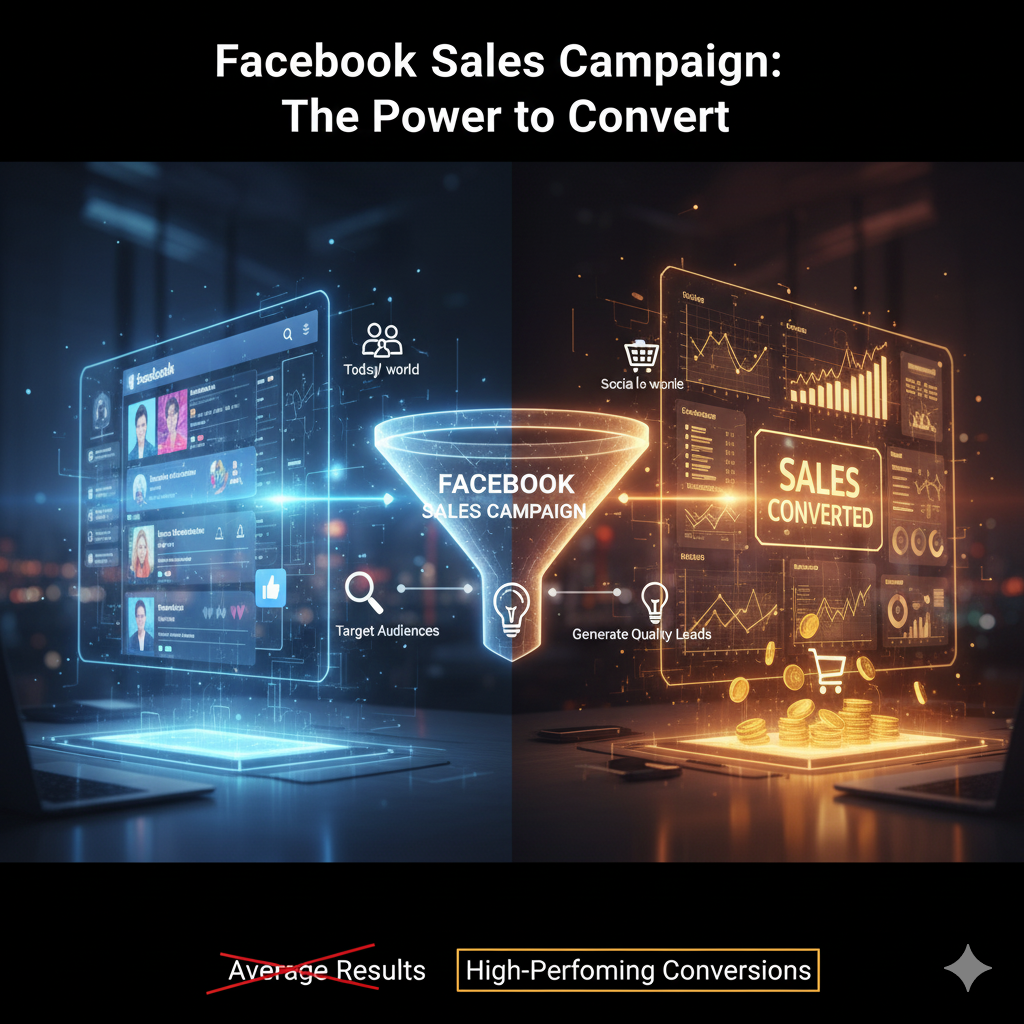
In today’s digital world, Facebook isn’t just a social platform — it’s one of the most powerful advertising tools for businesses of all sizes. A Facebook Sales Campaign allows brands to directly target audiences, generate quality leads, and convert them into paying customers.
Whether you’re an eCommerce business, service provider, or agency, understanding how to plan and execute a Facebook Sales Campaign can make all the difference between average results and high-performing conversions.
What Is a Facebook Sales Campaign?
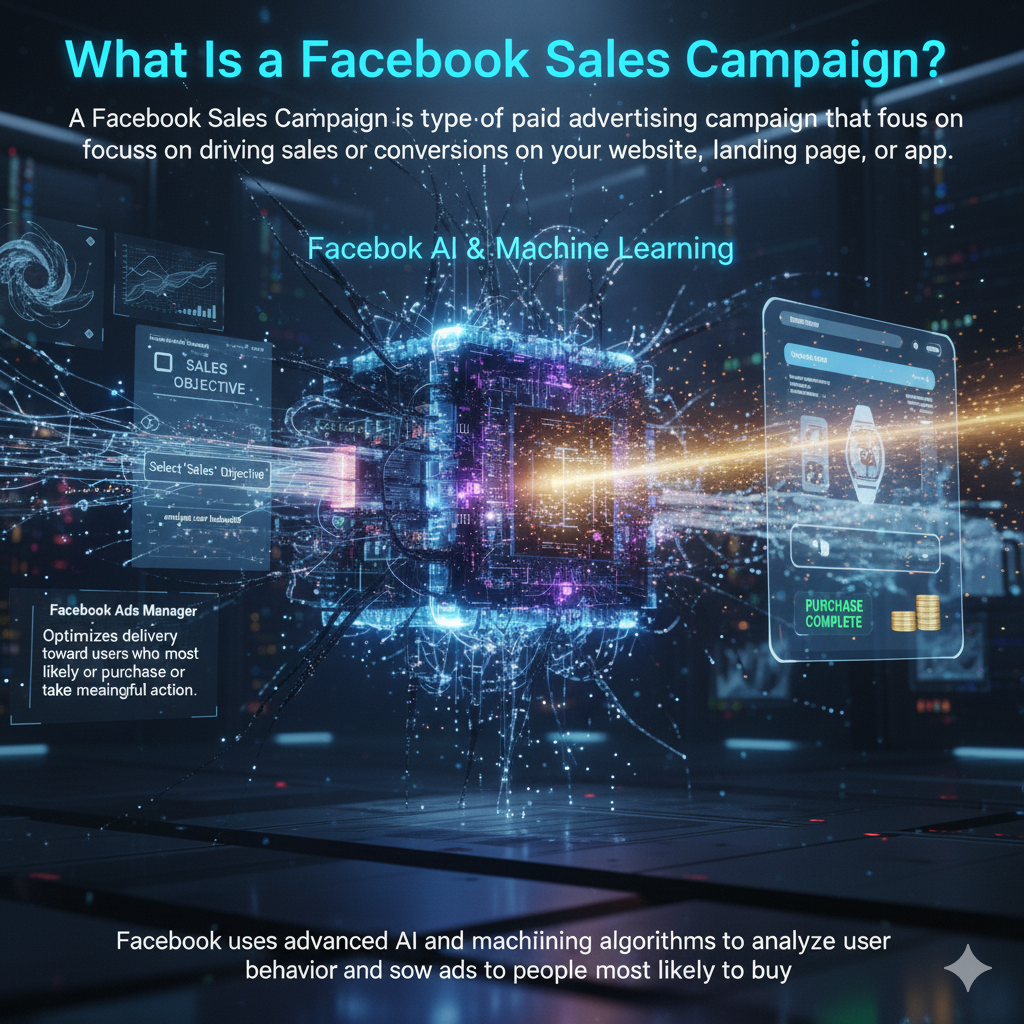
A Facebook Sales Campaign is a type of paid advertising campaign that focuses on driving sales or conversions on your website, landing page, or app. Using Facebook Ads Manager, advertisers can select the “Sales” objective — which optimizes delivery toward users who are most likely to purchase or take meaningful action.
Facebook uses advanced AI and machine learning algorithms to analyze user behavior and show your ads to people most likely to buy.
Key Objectives of a Facebook Sales Campaign
- Increase Online Purchases – Drive direct product or service sales from your website or store.
- Boost Leads and Conversions – Encourage users to sign up, subscribe, or request a quote.
- Retarget Potential Buyers – Re-engage users who visited your website but didn’t complete a purchase.
- Upsell or Cross-Sell – Promote related products to your existing customers to boost revenue.
Step-by-Step Guide to Creating a Facebook Sales Campaign
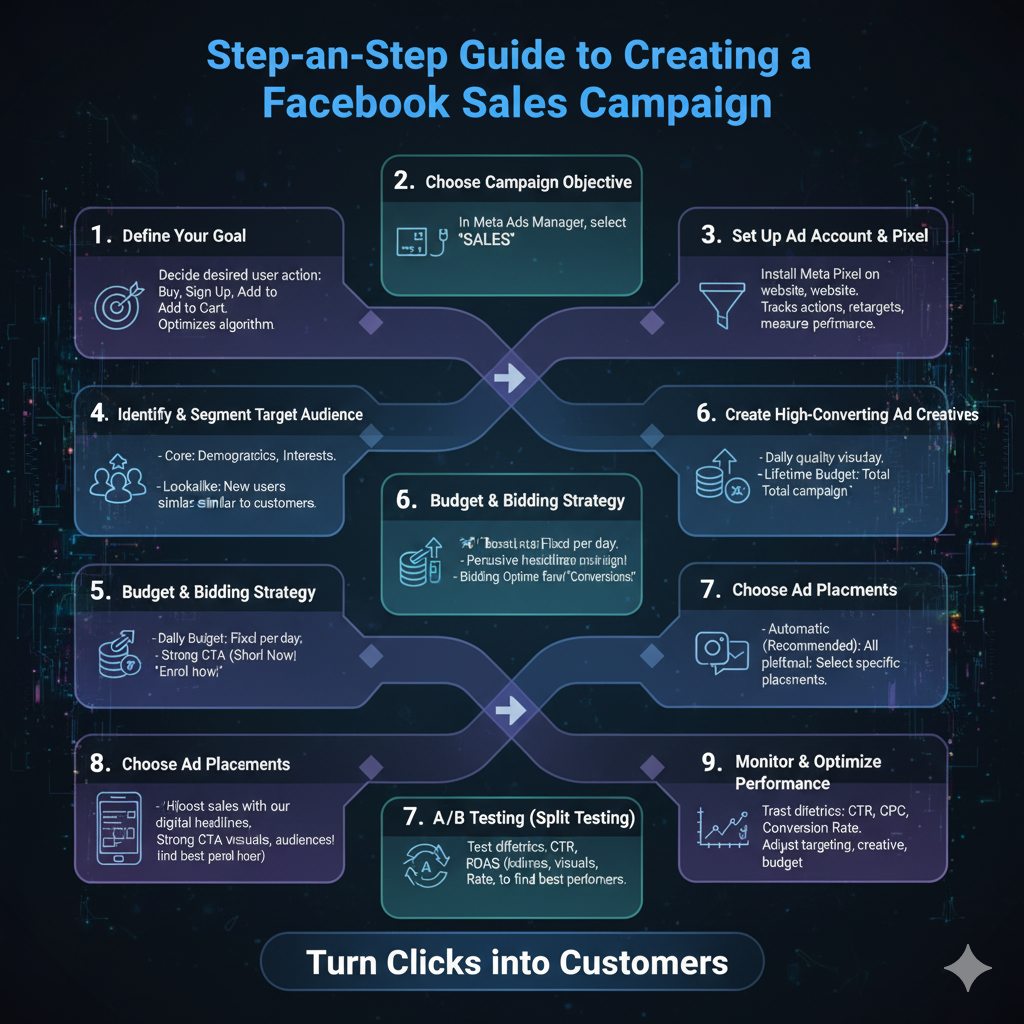
1. Define Your Goal
Before running any ad, decide what action you want users to take — buying a product, signing up, or adding items to the cart. This clarity helps Facebook’s algorithm optimize ad delivery for the best outcome.
2. Choose the Right Campaign Objective
In Meta Ads Manager, choose the “Sales” objective to help your campaign reach people most likely to make a purchase or take valuable action.This tells Facebook to target people who are most likely to convert based on past purchase behavior.
3. Set Up Your Ad Account and Pixel
Install the Meta Pixel on your website. It helps track visitor actions, retarget users, and measure ad performance — making your campaign data-driven and efficient.
4. Identify and Segment Your Target Audience
Use Facebook’s targeting tools to refine your audience:
- Core Audiences: Based on demographics, interests, and behaviors.
- Custom Audiences: People who have already interacted with your brand.
- Lookalike Audiences: New users similar to your existing customers.
5. Budget and Bidding Strategy
Decide between:
- Daily Budget – A fixed amount spent per day.
- Lifetime Budget – Total spend for the entire campaign.
For bidding, choose Conversions as your optimization event, and allow Facebook to automatically adjust delivery for best results.
6. Create High-Converting Ad Creatives
Your ad’s success depends heavily on its visuals and copywriting.
- Use clear, high-quality images or videos showcasing your product.
- Write short, persuasive headlines highlighting benefits, not just features.
- Add a strong call-to-action (CTA) such as “Shop Now,” “Get Offer,” or “Buy Today.”
Example Ad Copy:
“Boost your sales with our proven digital marketing course! Learn from experts and gain real-world experience. 🚀 Enroll now and start earning faster!”
7. Choose Ad Placements
You can select Automatic Placements (recommended) — which lets Facebook distribute your ads across Facebook, Instagram, Messenger, and Audience Network — or manually select where your ads appear.
8. A/B Testing (Split Testing)
Test different versions of your ad (headlines, visuals, audience types) to determine which performs best. Facebook’s built-in A/B testing tool makes this process simple.
9. Monitor and Optimize Performance
Once your campaign is live, track its progress through key metrics:
- CTR (Click-Through Rate)
- CPC (Cost Per Click)
- ROAS (Return on Ad Spend)
- Conversion Rate
If results are below expectations, adjust audience targeting, ad creative, or budget allocation.
Best Practices for a Successful Facebook Sales Campaign
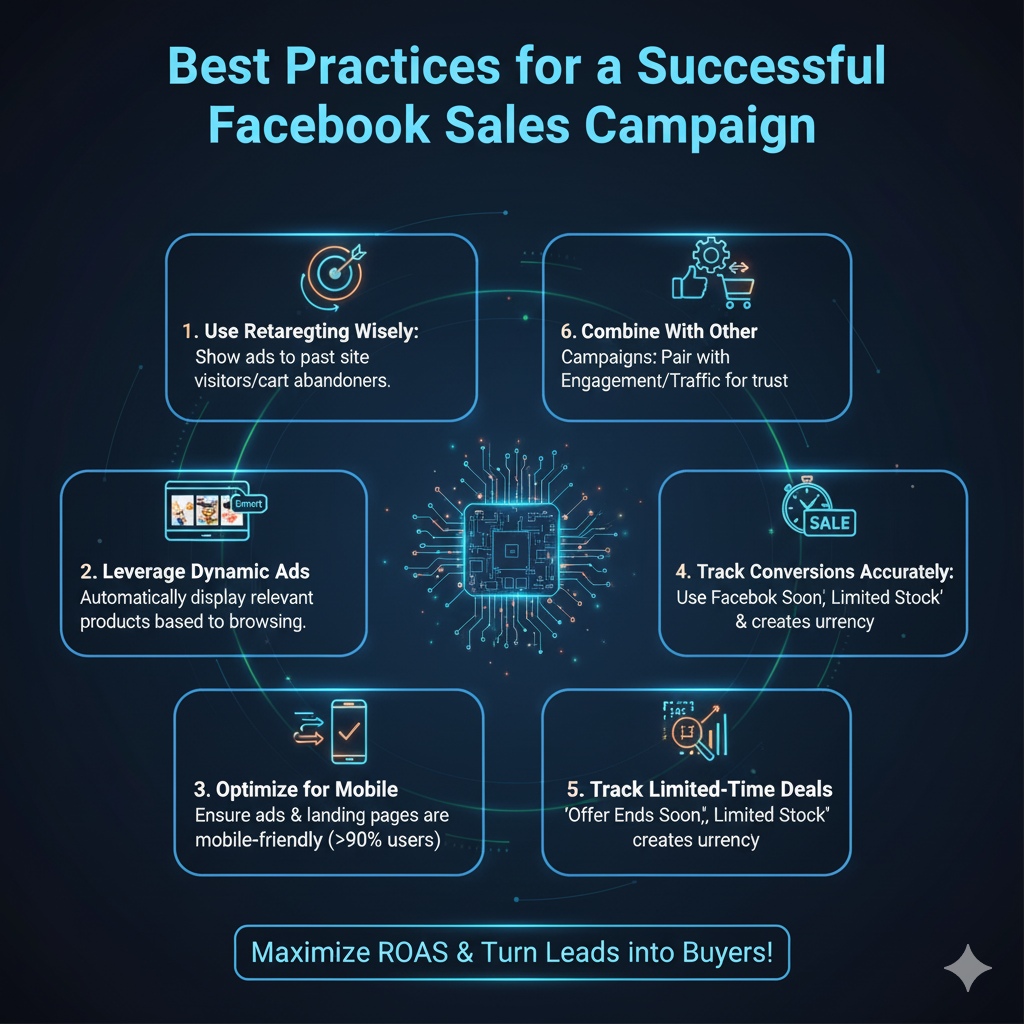
- Use Retargeting Wisely
Show ads to people who have already visited your site or added items to their cart but didn’t check out. - Leverage Dynamic Ads
Automatically display relevant products to potential customers based on their browsing behavior. - Optimize for Mobile
Since over 90% of Facebook users access the platform via mobile, ensure your ad creatives and landing pages are mobile-friendly. - Track Conversions Accurately
Use Facebook Pixel and Conversion API to measure every stage of your sales funnel. - Offer Limited-Time Deals
Scarcity encourages faster decision-making. Use phrases like “Offer Ends Soon” or “Limited Stock Available.” - Combine With Other Campaign Types
Pair your Sales Campaign with Engagement or Traffic Campaigns to build trust before converting leads into buyers.
Common Mistakes to Avoid
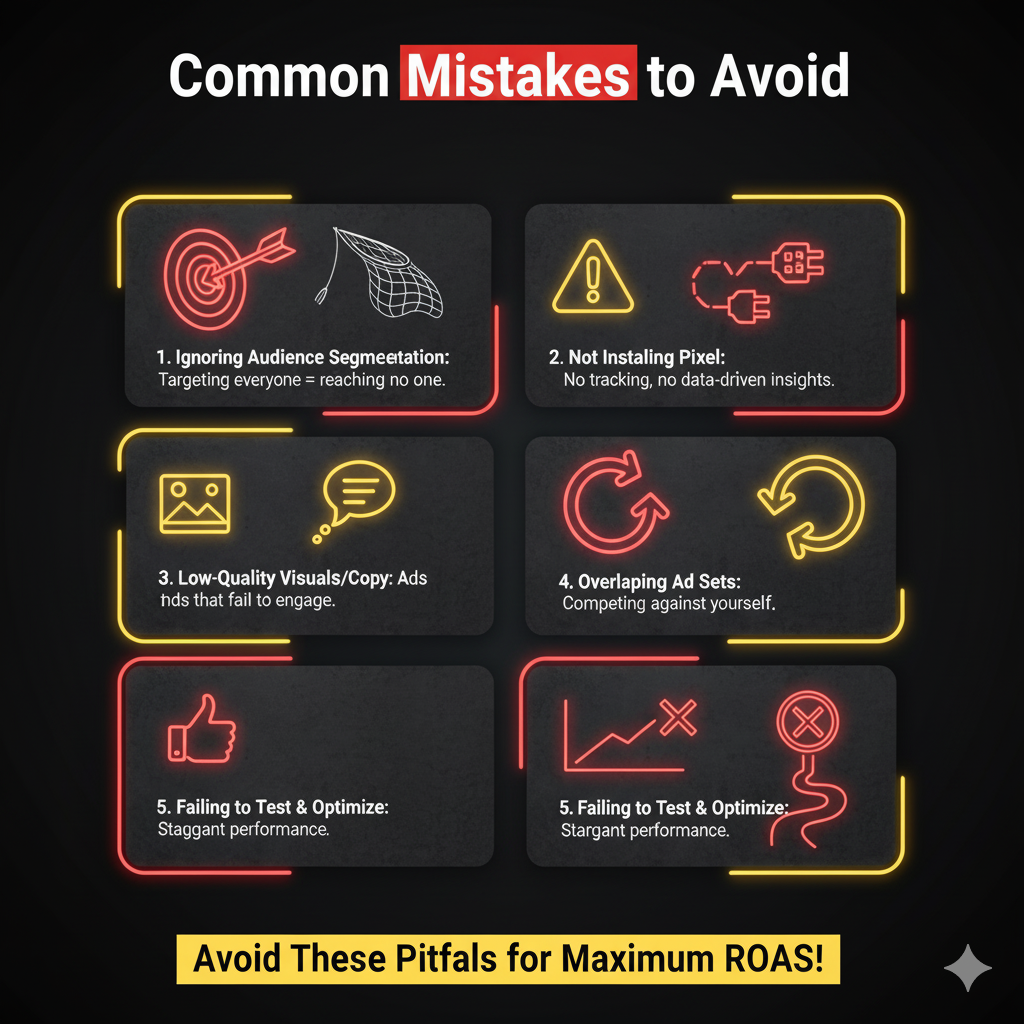
- Ignoring audience segmentation and targeting everyone.
- Not installing or properly setting up Facebook Pixel.
- Using low-quality visuals or generic ad copy.
- Overlapping ad sets that compete against each other.
- Failing to test and optimize regularly.
Conclusion
A well-planned Facebook Sales Campaign is more than just running ads — it’s about understanding your audience, crafting the right message, and optimizing for performance.
With a clear strategy, strong creatives, and data-driven adjustments, you can turn Facebook into a high-converting sales engine for your business.
Remember: successful campaigns are built on testing, tracking, and continuous improvement. Start small, learn fast, and scale your results confidently.